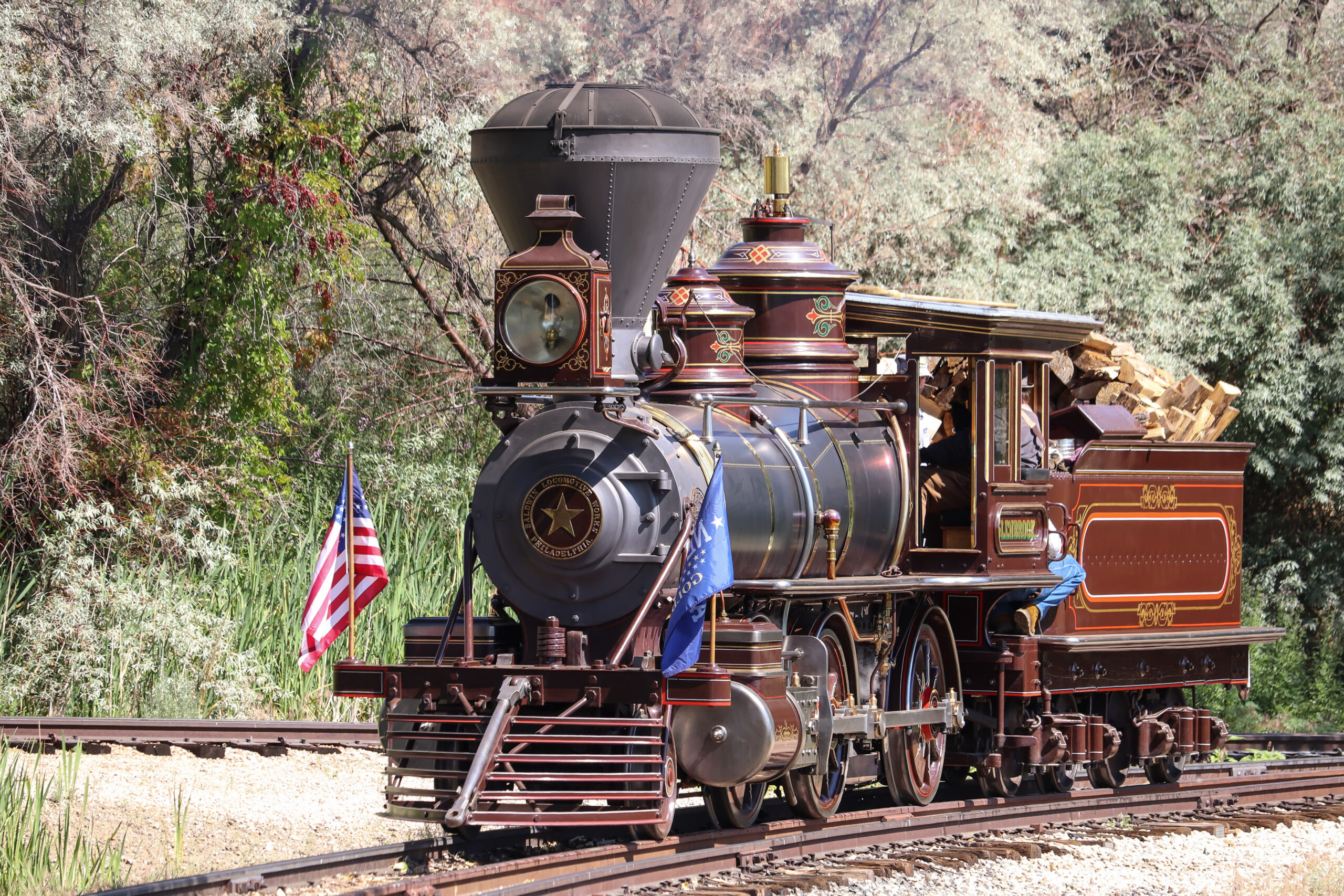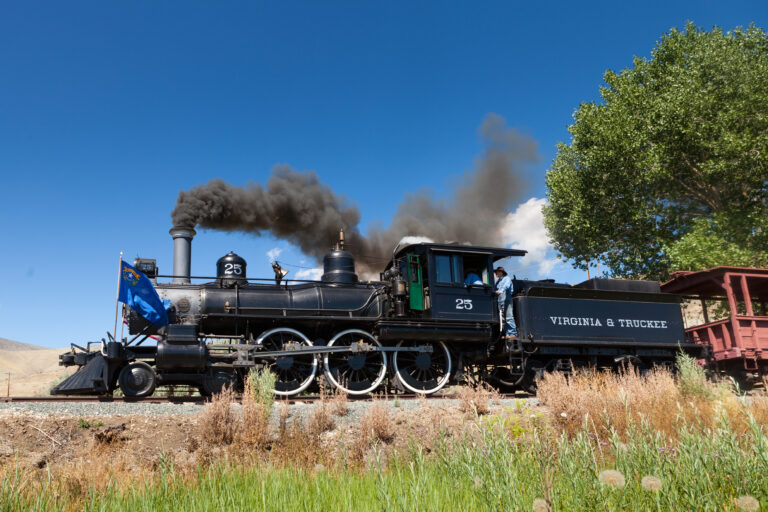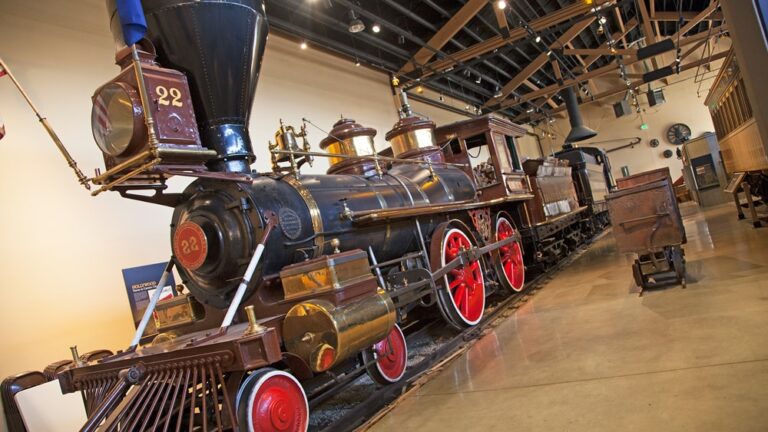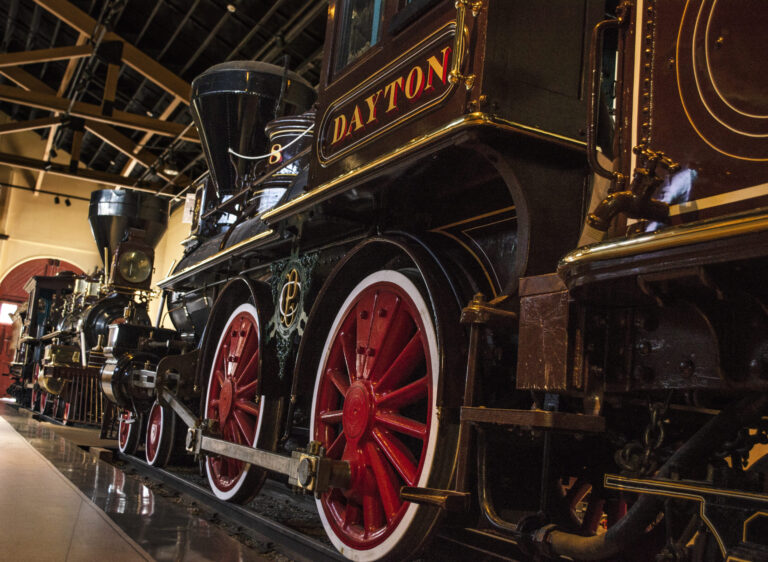Carson & Tahoe Lumber & Fluming Company Locomotive No. 1 – Glenbrook

The Glenbrook was built in 1875 by the Baldwin Locomotive Works of Philadelphia, Pennsylvania, for the Carson & Tahoe Lumber & Fluming Company. It is typical of locomotives built during the 1870s and 1880s for narrow gauge railroads and industrial lines. The Glenbrook hauled lumber and cord wood from the sawmills at Glenbrook, on the shores of Lake Tahoe, to the top of Spooner Summit where Highway 50 currently leaves the Tahoe Basin. At the summit, loads were transferred from flat cars into a V-flume that carried the wood and lumber to a huge yard at the south end of Carson City, close to where the Nevada State Railroad Museum is now located. The cord wood and timbers were then hauled by the V&T to the Comstock where the timbers were used for mining and milling purposes and the cord wood fed into boilers and heating stoves.
In addition to the line from Glenbrook and Spooner Summit, the C&TL&F also operated a logging railway from Bijou, on the south shore of Lake Tahoe, through Lake Valley to Meyers, originally called Yank’s Station. This line hauled logs to the lake. The logs were chained together to form rafts and pulled across the lake to the Glenbrook sawmills by steamboats. According to records, the Glenbrook was used occasionally on this line.
The forests around Lake Tahoe were extensively cut by the late 1890s. The Bliss family, owners of the C&TL&F, closed the sawmills in 1898. In 1899, the two C&TL&F rail lines (Bijou and Glenbrook) were taken up. The Glenbrook and other equipment were moved to the north shore of Lake Tahoe at Tahoe City. The Bliss family built the Lake Tahoe Railway from there to Truckee where it met the Southern Pacific. The railroad served lumber mills and transported tourists to Lake Tahoe. The train ran out onto a pier where steamships, including the Tahoe, were docked. Tourists transferred from the train to the steamship for a cruise around the lake visiting various resorts.
The Bliss family sold the Lake Tahoe Railway to Southern Pacific in 1926, retaining the Glenbrook until 1937. Later, the family sold the engine to the Nevada County Narrow Gauge Railroad. It served there as a source of spare parts. The NCNG ceased operations in 1942.
As a result of the war effort, it appeared that the Glenbrook might be scrapped. Miss Hope Bliss convinced the Bliss family to repurchase the Glenbrook in 1943 to save it from the scrapper. The family donated the locomotive to the Nevada State Museum in Carson City, where it became the State of Nevada’s first railroad artifact. The locomotive remained outside the building on public display for nearly 40 years.
In 1981, the Glenbrook was moved to the Nevada State Railroad Museum for restoration. Restoration work started and stopped several times on the Glenbrook. However, thanks to a grant from the E. L. Wiegand Foundation in 2010, the restoration shop completed restoration of the Glenbrook to its 1875 appearance and operating condition in 2015. According to noted rail historian Martin Hansen, the Glenbrook is the oldest operating Baldwin locomotive in the United States. The Glenbrook operates during special events throughout the summer months.



